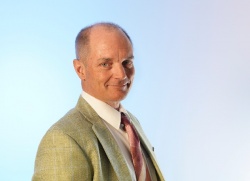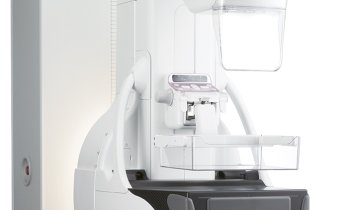Sectra - Confident and able to count on its photon counting technology
SECure TRAnsmission, the main aim of a spin-off from the Linköping Institute of Technology, was established in 1978. From this beginning, the Swedish firm Sectra has evolved into one of the world’s leading players in PACS and mammography solutions. Although secure communication systems remains a core business, the medical section has constantly grown since 1988, when Dr Torbjörn Kronander joined the company to expand Sectra’s digital image management systems for radiology departments.


Worldwide, more than 50 million primary examinations are now performed using a Sectra PACS. Indeed, in this arena the firm ranks fourth in Europe and is listed among the top 10 companies in the USA. In an interview with European Hospital Dr Kronander, President of Sectra Medical, reviewed past decades, highlighted the company’s philosophy and prophesied the future of picture processing and breast cancer detection
The rationale for the foundation of a medical division within Sectra arose from a very practical problem, Dr Torbjörn Kronander points out: ‘Because distances in our home country, Sweden, are quite huge, the transmission of images was very time consuming. So, Sectra started with teleradiology solutions and transferred images by computer at a time when digitisation was visionary, computers were everything else but common and the internet did not exist. Based on this experience we developed our first PACS in 1993, followed by larger ones in 1994 and 1995.
‘At that time, several hardware companies were looking for such solutions to handle the images acquired in radiology. We and Philips found each other and partnered to develop and envision, and Philips to sell and distribute our solution in some countries. Except for Scandinavia where we always sold direct. Then, five years ago, the direct sales model was enlarged and we begun to sell Sectra PACS under our own label in most countries, apart from in Japan where Philips still sells our PACS. Today, we are very successful -- especially in the European countries and in the US.’
What was and is the recipe for this success?
‘In general, our main vision is to develop solutions that perform the best productivity and efficiency. For PACS this means creating a product that is as stable as possible and which seamlessly fits in the radiology surrounding. In a nutshell: Our PACS solutions should run 10 years in a row -- even if the modalities are generating more and more data – and they should be as easy as possible to handle. We concentrate on features that have practical relevance and increase our customer’s productivity. As far as we know, our PACS is the fastest on the market.
In the next decade, will there still be a PACS as we know it today?
‘Yes, the digital image is here to stay, but it will change. And changes need time. There are several trends that will influence the PACS business in the next few years. First of all 3-D visualisation will become more important and more common, so that every PACS provider will be able to deliver such software solution. Sectra itself has a target to deliver 90 percent of the 3-D tools our users need. Another point will be the integration in flexible working environments, such as teleradiology-scenarios, which will gain increasing importance. A very interesting point is -- and will be -- more standardised interfaces to archiving. Hospitals don’t like the idea that the images they acquire are owned by a company. They want to be able to get the data out of the system every time they want it. Last, but not least, CAD procedures will increase and the post-processing of images will become an integral part.’
In terms of another of Sectra’s main pillars -- MicroDose Mammography – is photon-counting future-proof for breast imaging?
‘Photon-counting is very promising for two reasons. First, we now have several scientific proofs that we have the lowest, in fact half, the dose at the same or better image quality. For example, a study conducted in Ireland compared Sectra, Hologic and GE and it turned out that our system only needs 60 percent of dose and finds as many cancers as the other systems. Furthermore an annual report from the Swedish Institute of Radiation Protection said that mammography is the only modality where radiation decreased significantly and that this success is mainly because of an increased use of Sectra MicroDose Mammography. As dose awareness is increasing in most markets those results show that photon counting is very much the future of mammography.
‘The other reason we count on our counting technology is our latest development, spectral imaging based on our detector. This innovative technology brings colour into a mammograms by measuring the energy level of each individual photon, with the result that several forms of tissue are displayed in different colours and can more easily be characterised.’
What about tomosynthesis?
‘We have four tomosynthesis installations that are used for research purposes across Europe. But we think that especially in screening programmes productivity is a problem. An examination takes too long and, up to now, there’s no scientific proof that more cancers can be seen with tomosynthesis. So we have a system but we don’t sell it, but use it for research purposes. It hasn’t yet proven to increase productivity and efficiency in the clinical setting. I think that spectral imaging has much better predictions to improve early breast cancer detection, but this also needs to be proved, and only the future can show us the potentials of the method.’
02.03.2011











